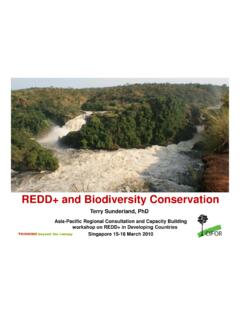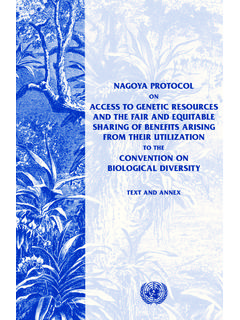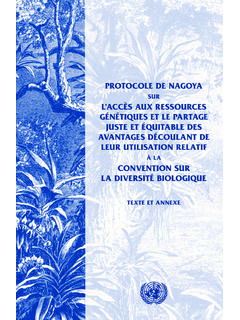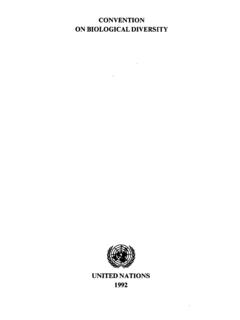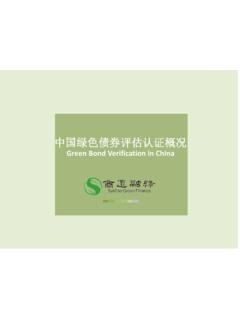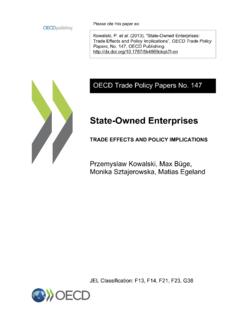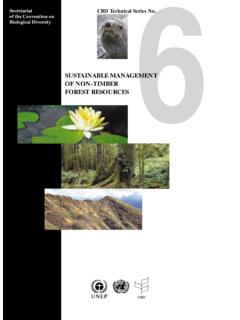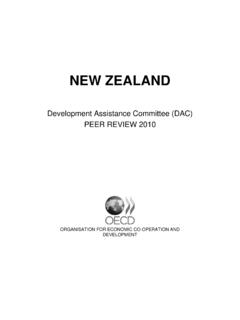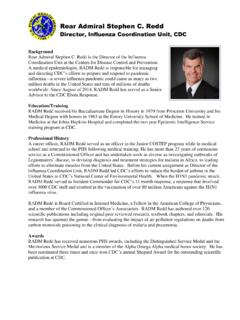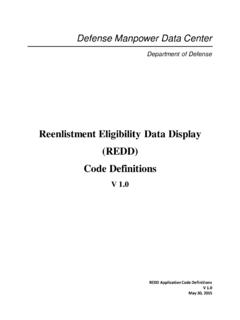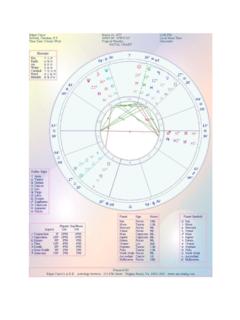Transcription of An Overview of Readiness for REDD: A compilation …
1 1An Overview of Readiness for redd : A compilation of Readiness activities prepared on behalf of the Forum on Readiness for REDDE dited by:Tracy JohnsEvan JohnsonNora GreenglassVersion 2 (December 2009)The Woods Hole Research Center2 Acknowledgements:The editors would like to acknowledge the valuable input to this report of the following institutions, among others: Climate, Community and Biodiversity Alliance, The Clinton Foundation, Conservation International, Fauna and Flora International, The Nature Conservancy, The UN redd Programme, Voluntary Carbon Stan-dard, Wildlife Conservation Society, The World Bank Forest Carbon Partnership Facility, World Resources Institute, World Wildlife Fund.
2 Additionally, we would like to thank representatives from FCPF countries who offered their consultation in this report. We would also like to thank the many government and non-govern-ment institutions that contributed their information to the country-by-country Readiness updates in Section III of this document. And finally, we would also like to thank Liz Braun, Danielle Knight, and Greg Fiske for their assistance in editing and preparing this report. We would also like to thank The David and Lucile Packard Foundation, Gordon and Betty Moore Foundation, and the Norwegian Agency for Development Cooperation for financial support for the Forum on Readiness for redd .
3 3 ForewordAmidst accumulating signs of a global climatic disruption that is already inflicting harm on human populations and natural ecosystems, redd is an important source of optimism. In the course of a mere four years since the official UNFCCC process embraced the concept of compensating tropical nations for their nation-wide achievements in slowing deforestation, enormous strides have been taken. It would have been hard to imagine, at the 11th COP of the UNFCCC, that before the Copenhagen meeting a profusion of activities to teach, understand, and refine the concept of redd would be underway around the tropics, and that numerous nations would begin the process of designing programs for achieving sustainable reductions in deforestation while advancing the well being of rural communities.
4 This document is an important survey of redd initiatives underway around the world, serving as an up-to-date register of the innovation, energy, and creativity that has been brought to bear upon moving redd from theory to practice. These are the first steps towards achieving the full potential of redd as a new paradigm in rural development. I am certain that you will find this document rich and well worth your attention as we work together to find the full global solution for the climatic disruption. Daniel C. Nepstad, Senior Scientist, Woods Hole Research CenterAbout this DocumentThe Woods Hole Research Center, acting as the secretariat for the Forum, agreed to collect information on Readiness activities taking place in developing countries and assemble a background document that would allow interested stakeholders to get a snapshot of Readiness activities taking place both globally and in their country or region.
5 As a way to highlight potential gaps and synergies and encourage collaboration and partnerships in all facets of Readiness background document aims to provide a snapshot view of Readiness activities around the world. Given the high level of interest and support for redd , the pace and number of Readiness projects and initiatives has been increasing at an encouraging rate. This document is by no means an exhaustive catalogue of Readiness activities , and we have not been able to include everything that we would have liked. We intend for this to be a living document and encourage comments and additional input, which can be included in electronic of the information about specific projects, programs, and activities is compiled or adapted from publicly available information sources from the governments and program/project participants, or from personal communication with them.
6 None of the information herein is intended to represent original analysis from WHRC. For questions about specific programs and projects, we recommend that you contact the institutions involved or consult public hope is that this document will provide a useful glimpse at the state of Readiness activities around the world and that it may enable increased collaboration and coordination among countries and organizations in the vital steps leading to global Readiness for the first edition of this report was released in 2008, Parties to the UNFCCC have continued the negotiation process to define an international mechanism to reduce emissions from deforestation and forest degradation in developing countries ( redd ).
7 As this framework takes shape, many developing countries have been working to develop Readiness for redd ; determining and filling the gaps between their existing social, technical and institutional capacities and those that may be required for participation in an eventual redd mechanism. In countries that have joined the programs of two of the major instruments supporting redd Readiness , the World Bank Forest Carbon Partnership Facility and the UN- redd Programme, the Readiness process is defined and publicly documented. Many countries have focused their early Readiness efforts on planning and stakeholder outreach; several countries have also begun to develop or expand in-country technical capacity for mapping, measuring and monitoring.
8 In addition, the number of countries that have developed or hosted the development of sub-national redd demonstration projects has increased substantially since 2008. While Readiness activities over the last two years have intensified in anticipation of an international redd mechanism, many of the national-level implementers consulted for this report stated that they are awaiting the outcome of the 15th Conference of the Parties before undertaking additional, concrete steps towards making redd a reality. The information in this Overview is a compilation of materials from governments, NGOs, and civil society organizations participating in redd Readiness activities , edited by the Woods Hole Research Center for the Forum on Readiness for redd .
9 This Overview document provides a look at what steps are being taken towards the goal of reducing carbon emissions from deforestation and forest degradation through forest conservation, avoidance of forest degradation, and improvement of forest management practices. redd and the UNFCCCThe concept of a mechanism that would reward developing countries for protecting their forests from deforestation was formally introduced to the UNFCCC process at the 11th Conference of the Parties (COP) in Montreal in 2005. The COP referred consideration of such a mechanism to the Subsidiary Body for Scientific and Technological Advice (SBSTA) and requested that the SBSTA report on the views of Parties; relevant scientific, technical, and methodological issues; and the exchange of information and experiences regarding policy approaches and positive incentives in two years time, at the 13th COP in Bali.
10 Two intersessional workshops on redd were held in 2006 and 2007 to discuss SBSTA s work programme, culminating in a request to the Chair of SBSTA to provide draft decision text as the basis for further discussion and development. Decision 2 , Reducing emissions from deforestation in developing countries: approaches to stimulate action , was released in at COP 13/SBSTA 27 in Bali, at which point SBSTA reported that redd had the potential to be an important climate change mitigation tool under the Convention. redd was thus included in the Bali Action Plan as policy approaches and positive incentives on issues relating to reducing emissions from deforestation and forest degradation in developing countries; and the role of conservation, sustainable management of forests and enhancement of forest carbon stocks in developing countries , and incorporated into discussions of a post-2012 agreement under the Ad Hoc Working Group on Long Term Cooperative Action under the Convention (AWG-LCA).
